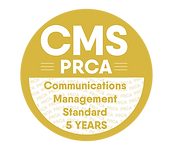Private Member’s Bills: How do they work and what can they achieve?
20 June 2022 - by Matthew JacksonThe last mandate saw a big increase in the number of Private Member's Bills introduced in the Assembly - 20 in total during the short two year period between January 2020 and its dissolution before the election in March 2022.
With MLAs returning for a new mandate – including 18 new faces –we can expect to see a range of policy proposals being submitted when a Speaker is elected.
This presents an opportunity for organisations to engage with MLAs on areas they are campaigning on and also to support the legislative journey of a Bill.
What exactly is a Private Members’ Bill?
A Private Member’s Bill is a legislative proposal which is brought before the Assembly by a Member of the House who is not a Minister. That means it is not necessarily Executive policy and has not been prepared by a specific Department.
They are an opportunity for backbench MLAs to initiate and drive legislation, and affect real change on a given issue.
What happened in the last mandate?
Of the 20 bills introduced, 10 were passed by MLAs and became law – an increase from the seven Bills passed during the entirety of the 2011-16 mandate.
Changes brought about by these bills include modernisation of defamation law (Mike Nesbitt), free period product provision in public buildings (Pat Catney), ensuring safe leave from work in cases of domestic abuse (Rachel Woods), abolition of hospital car parking charges (Aisling Reilly) and greater facilitation of integrated education (Kellie Armstrong).
Importantly however, even if a bill fails to make it through the legislative process, it can still have an impact on shining a light on an issue and persuading the relative Minister to act.
For example, although Clare Bailey’s Climate Change Bill was withdrawn at Further Consideration Stage, much of it was incorporated into the Department’s own Climate Change Bill which became law in March 2022. Somewhat differently, Colin McGrath’s Education (Curriculum) (CPR and AED) Bill was adopted by the Education Minister following Second Stage, with the provisions enacted through secondary legislation.
And while John Blair’s Hunting of Wild Animals Bill also failed to become law, falling at Second Stage, it garnered over 16,000 consultation responses, received much media attention and will more than likely return again this mandate.
Is the process for a PMB any different than Executive Bills?
The Standing Orders which govern the Assembly make no distinction between Executive Bills introduced by Ministers and those brought by Members, and the technical procedure once introduced to the Assembly is identical.
However Executive bills will have significantly more resource behind them, with departments supporting their development unlike those put forward as Private Members Bills; though this in itself is an opportunity for organisations to offer their expertise.
Nonetheless, it must be noted that Executive business will always take precedence over Private Members business in the chamber, particularly during busy periods such as we saw during the COVID response, and towards the end of a mandate when a range of Bills are competing for airtime.
For this reason, it is advisable to submit your Bill early in the mandate to maximise its chances of becoming law.
To speak to us about how we can support you in shaping and influencing legislation, contact us on ideas@stratagem-ni.com








